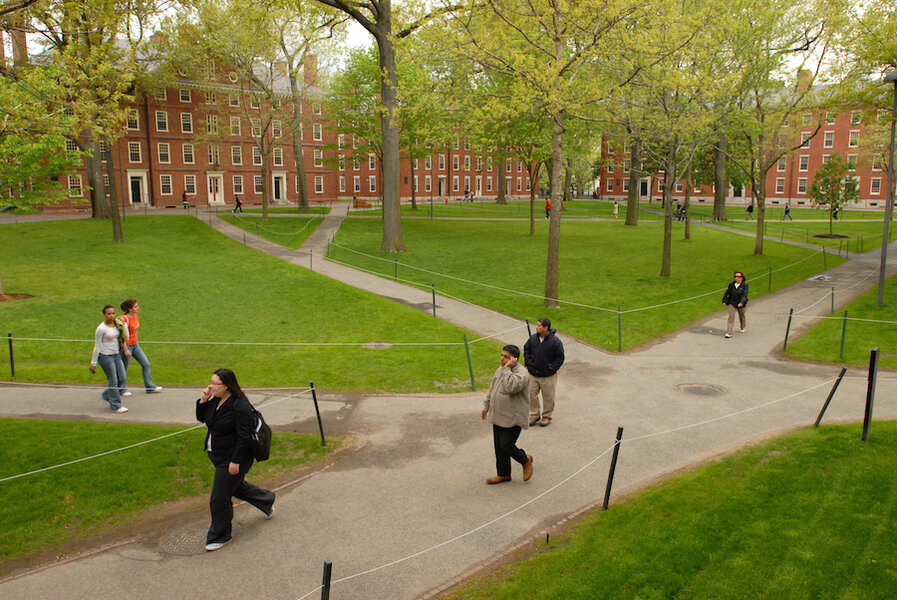Why college rankings are unfair
After heavy lobbying from some of the nation’s most elite institutions of higher education, the President has just abandoned his effort to rank the nation’s 7,000 colleges and universities.
So, with college application season almost upon us, where should aspiring college students and their parents look for advice?
In my view, not U.S. News and World Report’s annual college guide (out last week).
It’s analogous to a restaurant guide that gives top ratings to the most expensive establishments that are backed and frequented by the wealthiest gourmands – and much lower rankings to restaurants with the best food at lower prices that attract the widest range of diners.
Without fail, U. S. News puts at the top of its list America’s most exclusive and expensive private universities that admit low numbers and small percentages of students from poor families.
These elite institutions also train a disproportionately large share of the nation’s investment bankers, corporate chieftains, corporate lawyers, and management consultants.
Around 70 percent of Harvard’s senior class routinely submits resumes to Wall Street and corporate consulting firms, for example. Close to 36 percent of Princeton’s 2010 graduating class went into finance, down from 46 percent before the financial crisis.
And so it goes, through the Ivy League and other elite private institutions.
Meanwhile, U.S. News relegates to lower rankings public universities that admit most of the young Americans from poor families who attend college, and which graduate far larger percentages of teachers, social workers, legal aide attorneys, community organizers, and public servants than do the private elite colleges.
US New claims its rankings are neutral. Baloney.
They’re based on such “neutral” criteria as how selective a college is in its admissions, how much its alumni donate, how much money and other resources its faculty receive, and how much it spends per student.
Colleges especially favored by America’s wealthy are bound to excel on these criteria. The elite pour money into them because these institutions have educated them and, they hope, will educate their offspring.
A family name engraved in marble on such a campus confers unparalleled prestige.
And because these institutions have educated such a high proportion of America’s wealthy elite, that elite looks with particular favor on graduates of these institutions in making hiring decisions.
Which helps explain their high and increasing selectivity. As the income and wealth of America’s elite has soared over recent decades, the financial benefits of being anointed as a graduate of such an institutions have soared in tandem.
The U.S. News rankings perpetuate the myth that these elite institutions offer the best education – as if the economic diversity of a student body and the values and career choices of its undergraduates were irrelevant to receiving a high-quality education.
And as if educational excellence could be measured by the size of the wallets supporting it.
Public universities are at an inherent disadvantage on these criteria because they rely on state funding instead of wealthy alumni. They also admit large numbers of students, which often means a lower expenditure per student.
And because public universities have a special responsibility to be accessible to students from every economic class, they take more chances on broader range of promising students, including many who are the first in their families to attend college.
Public universities are the major vehicles of upward mobility in America. They educate 73 percent of all college students. The Ivy League educates just 0.4 percent.
And the best public universities provide a higher-quality education, in my view, than many of the private elites.
Full disclosure: I was educated in private elite universities – Dartmouth and Yale. And I taught for many years at Harvard.
These venerable institutions rate at or near the top of the U.S. News rankings.
For the past decade, though, I’ve been teaching at the University of California at Berkeley.
One thing I’ve discovered: My Berkeley students are every bit as bright as the students I met or taught in the Ivies.
Another: More Pell-grant eligible students (a proxy for students from low-income families) attend Berkeley than attend the entire Ivy League combined.
And my Berkeley students are more involved in, and more of them are aiming for careers in, public service than any group of students I’ve ever had the privilege of teaching. (Each year, around 10,000 Berkeley undergraduates engage in off-campus public service projects and programs.)
In an era when income and wealth are more concentrated at the top than in living memory – much of it in the hands of Wall Street bankers, corporate executives, and their retainers – U.S. News has become a major enabler of American inequality.
We need another guide for ranking colleges – one that doesn’t look at the fatness of alumni wallets or the amount spent on each student, but does take account of economic diversity and dedication to public service.
Fortunately, there is one. It’s a relatively new one, provided by the Washington Monthly.
My advice: Use it.






